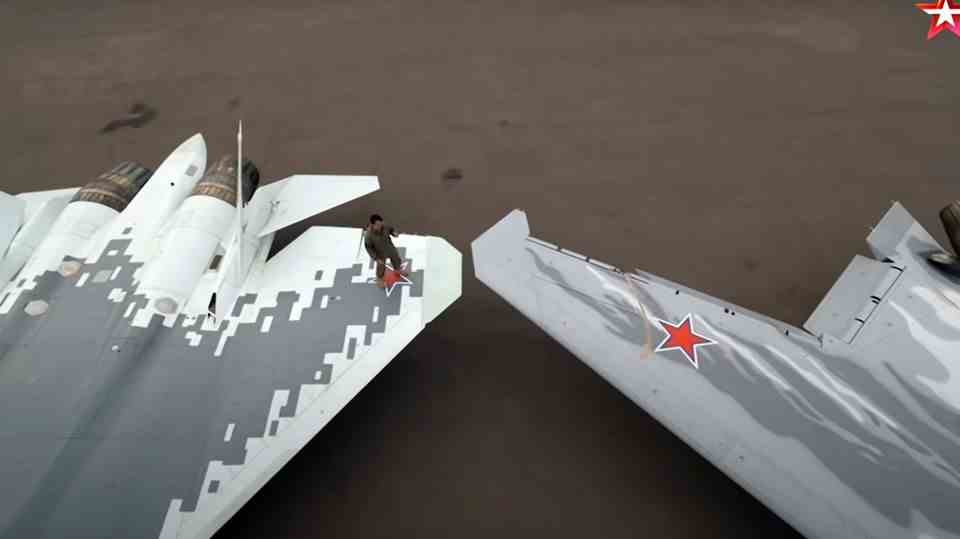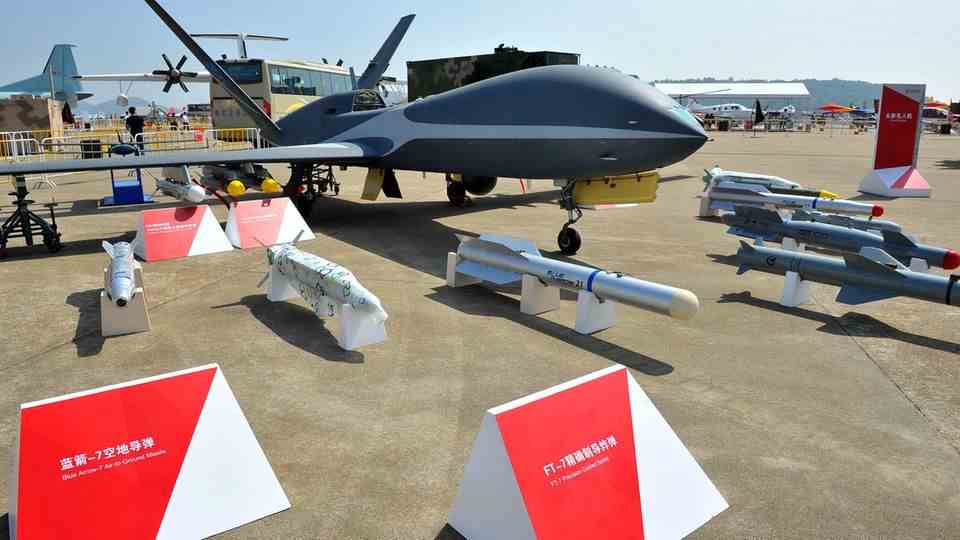drone war
Switchblade drones – these kamikaze weapons are designed to help Ukrainian troops
The Swichblade was designed for the war in Afghanistan.
© Michael Sugrue/AeroVironment/PR
Mini drones like the Switchblade are a powerful weapon for small battlegroup raiding tactics. But Kyiv gets few weapons from the US. And they are not the largest drone manufacturer in the world.
Kamikaze weapons – what are they anyway? Kamikaze is a catchy, popular term, but it doesn’t have a technical, precise definition. The word alludes to the Japanese aviators who, toward the end of the war, swooped down on American ships with their machines stuffed with explosives, sacrificing themselves in the process. This tactic had no real impact on the course of the war. Nevertheless, the principle is now being successfully taken up again for unmanned drones.
Term used for drones
Many weapons self-destruct on impact – all cruise missiles, for example, but essentially the term is used today for disposable combat drones. The special thing about it: They are launched without their destination already being determined, and their flight time is remotely controlled with a controller. Because of the ability to circle above the ground and lurk for “prey,” kamikaze drones also count as “loitering ammunition.” As soon as its sensors spot a target, the drone lunges at it and detonates itself with the target. Unlike the well-known combat drones, no bomb is released or rocket launched. Missile and warhead form a unit.
The disadvantage of the self-destruct concept is that the missile is also destroyed. Self-destruct drones are only possible because the widespread civilian spread of drone technology also allows cheap production of military drones. Nevertheless, the price factor limits the range of applications. An object with very good flight characteristics, electronics protected from interference and comprehensive sensors is correspondingly expensive, and it can hardly be used for one-way missions. At least as long as the drone is not used exclusively against specific and expensive targets such as a destroyer.
+++ Also read: Ukrainian drone owners get involved in the conflict – and present the manufacturer with a dilemma +++
Small Infantry Drone
Now the US is supplying Switchblade drones to Ukraine. Intended for infantry, these kamikaze drones are correspondingly simpler and cheaper than the more powerful combat drones. But they can be produced and used in larger numbers. The USA’s Switchblade 300 is a case in point. It is transported in a 7 cm wide tube and unfolds its rotors only after launch.
The device can fly for about 10 minutes, has a range of about 10 kilometers and a combat weight of 2.5 kilograms. That is, the explosive power is limited, it is roughly equivalent to a claymore mine. The drone can spy on its target and hit it exactly. In any case, the explosive power is enough to destroy an unarmored vehicle or take out a group of infantrymen. In any case, it is a very suitable element for the ambush tactics of the Ukrainian troops. The disadvantage is that only one “shot” is possible. The advantages include the long range for such a small system and that the shooter does not need line of sight to the target when launching. Ideal for ambushes.
The Switchblade 600 is vastly larger and more powerful. It carries the warhead of the Javelin anti-tank missile and has a range of 40 kilometers, but it can no longer be easily carried by an infantryman.
Cheap gun for everyone
Kamikaze drones are comparatively new to the battlefield, but they are anything but exclusive high technology. Ultimately, all civilian drones can easily be converted into kamikaze weapons, at least if they are not children’s toys. Civilian drones are much cheaper than the devices specially developed for the military. An agricultural drone, for example, can carry a warhead weighing 20 kilograms. Even for private customers, such an agricultural drone costs less than 3,000 euros. Systems like Switchblade have military merits, but basically demolition drones are the “poor man’s air force”.
The problem of the expensive military technology is already evident in the delivery to the USA: A total of 100 pieces of the disposable weapon are delivered. With comparatively little effort, drones create a threat from “above” even for highly armed armies. An ideal weapon for insurgents and guerrilla fighters around the world and not only in Ukraine.
Who wins in the drone war
It remains questionable whether the Kamikaze variant is really so much more efficient that it justifies the loss of the drone. It is more likely that warring parties will try to save the drone for further use. If a warhead is dropped from a hovering drone from a low altitude, even “dumb” ammunition will hit the target very accurately. Not nice for the West: China dominates the market for commercial drones. At the top of the Kremlin’s wish list are combat drones of all kinds. Even if Beijing is not currently going to deliver purely military drones, commercial drones remain, which Russia could upgrade later.
Russia also uses drones
If that’s even necessary. Kamikaze or bomb drones are important for Ukraine because Kyiv can hardly fly aerial missions and has steadily fewer heavy weapons at its disposal. Russia, on the other hand, is more likely to use small drones to just scout targets and then engage them with ranged weapons. Instead of a mini-warhead, a volley of Grad missiles then hits the target. Russia is already using a wide variety of drones. The fighter squads of the Kiev armed forces, which want to ambush Russian convoys with drones and anti-tank missiles, are in turn being hunted by the Russian army’s drones.




